
Review: Dynacord IPX Power Amplifiers
Dynacord’s Global Product Manager explains what makes the new TGX and IPX series of high-output multi-channel power amplifiers different.
Interview:/ Christopher Holder
TGX and IPX represent a bold assault by Bosch on the touring and install markets. There are plenty of headline features (as well as a fist full of patents), and these amps are an exciting manifestation what a huge engineering-based multi-national like Bosch can do when it flexes its R&D muscles.
And this is the first point to make: the Dynacord marque is to be a thoroughbred manufacturer of power amps and DSPs. It will no longer be the slightly confused European step brother to the ‘all-American’ Electro-Voice. That extra degree of separation will help the market to differentiate and distinguish the offerings. No one will assume that here is a range of companion amps for Electro-Voice loudspeakers. Dynacord isn’t owned by EV, it’s owned by Bosch.
Driving the development of these new ranges of amplifiers is an Australian. These amps are Jonathan ‘Jono’ Bailey’s babies, and it was with considerable pride that he revealed them to the marketplace at InfoComm earlier in the year.
AV Asia Pacific sat with Jono to find out what’s under the bonnet.
ROLE OF DSP
Jono Bailey: We set very high goals with these amps, and were able to achieve the industry’s highest audio quality and highest output power ever produced on an multichannel amplifier. But, this means zero unless you are able to do it reliably year after year under even the most extreme conditions — and to do this requires huge amounts of processing power to ensure that the amplifier performing optimally under any mains condition or thermal situation. Features like JTM and Cycle by Cycle filtering [more later] would not be possible without processing like this. So the processing power of modern amplifiers is not only so signal processing can make things sound better, but now also plays a critical role in output reliability. So I think DSP is here to stay.
The problem with DSP is that under poor main conditions, where there could be a drop in mains power for even a second, DSP amplifiers are essentially fragile because they are a computer that requires time to reboot, establish network connections and only then produce audio.
This is one reason why many system designers have compromised the electrical designs with using old analogue amps and centralising DSP or using lower powered DSP amplifiers that can be backed up via UPS. This becomes extremely expensive and increases rack space.
Therefore I approached this challenge to make a high performance DSP amplifier that is be able to restart its audio instantly — just like an analogue amplifier can. With IPX we achieved this. So during a short term power outage the amplifier never drops its network or DSP connectivity, therefore there is no long reboot times. This has been extremely well received in parts of the world where mains hand off to a generator back up supply often requires many seconds of no power at the rack side.
NEVER SLEEPS
Jono Bailey: Both the IPX and TGX have something called Eco Rail — we don’t really advertise the fact in the touring models but it’s still there. Eco Rail is a separate operating power rail. So the amplifier can produce background music — for a foyer or the like — in standby mode.
It’s a great idea that came out of some EUFA and FIFA stadium installation requirements, under EN54-16.
To be EN54-16 compliant you need to constantly monitor the lines, 24/7. So it’s primarily as a result of a monitoring function of the amplifier but it produces enough output for low level output modulations — background music. So that’s very cool. And then as soon as you need power output, the amplifier transparently and instantly pushes into full power output.
HI & LO Z AT THE SAME TIME
Variable Load Drive (VLD) was successfully introduced with Dynacord’s DSA amplifiers. For each channel, the user can determine whether Low-Z or High-Z 70V/100V loudspeakers are driven without output transformer via direct drive technology. Thanks to VLD, the amplifier can be optimally configured for individual applications via software. In low-impedance operation, each amp channel can be driven in .1-ohm steps with virtually any output power via IRIS-Net software – from 100W to the maximum output power of the amp – across the complete impedance range of 2-10 ohms. This technology allows users to drive all kind of different loudspeakers – even in very complex installations – using only one type of power amplifier in the field.
Bosch: 1300 026 724 or www.boschcommunications.com.au
THE RANGE
IPX10:4 (4 x 2500W)
IPX10:8 (8 x 1250W)
IPX20:4 (4 x 5000W)
IPX5:4 (4 x 1250W)

“IPX and TGX represent a new era of amplification. Class D, until now, has hit a performance ceiling and we’ve broken through that”
— Jono Bailey, Bosch Global Product Manager
FULL POWER COME WHAT MAY
Jono Bailey: JTM (Junction Temperature Modeling) provides the ability for the amplifier to operate under any operating — thermal or power — conditions.
Traditionally, power amps shut down or reduce the output voltage when the temperature at the heat sink exceeds a certain temperature. The idea is you have to play it safe to safeguard the electronics.
What we do is model, in real time, the actual junction temperature inside the semiconductor components, based on the operating parameters, such as operating voltage, housing temperature, output current and output voltage. Parameters such as current and voltage are continuously measured. This approach means you get the most out of your semiconductor components — more output; more reliability.
We also use Mains Circuit Breaker Protection (MCBP) — algorithms to ensure a steady and safe operation range of the amplifiers’ circuit breaker and prevent a false overload alert under normal operation. The circuit breaker’s primary protective role not affected. With this process, Dynacord’s power amplifiers offer maximum power at highest operational safety and optimum availability.
BELOW 2 OHMS
Jono Bailey: ‘Cycle by cycle current limiting’ allows the amplifier to safely operate below 2 Ohms — in fact, it goes down well below that. Actually we stop the amplifier from going too much below one ohm — 0.7Ω to be precise. Beyond that we tell the amplifier to pulse the power, as it’s quite likely that whatever’s connected to the amp is on fire at that point!
96K SWITCHING FREQUENCY
Jono Bailey: We fixed and stabilized the switching frequency at double the normal Class D frequency. That way, there’s not as many intermodulations down into the audible frequency spectrum. We’ve done blind tests with golden-eared acoustic consultants and speaker designers, they can’t believe they’re listening to a Class D amp.
Class D and switch mode power supplies have known issues with reproducing really high or low frequencies and we have both those areas covered. I believe IPX and TGX represent a new era of amplification. Class D, until now, has hit a performance ceiling and we’ve broken through that.

HIGH CHANNEL COUNT
Jono Bailey: People now expect multi-channel amps. Four channels was a minimum for us.
Of course, at the top end, immersive audio and a cellular approach to powering loudspeakers is driving the push for more channels. In the mid market, and in the install market especially, people want to drive more speakers with fewer channels — the market wants lower cost but a higher output. So the features like the cycle by cycle current limiting (allowing the amplifier to drive down to 1Ω), and still utilising the full dynamic range of the amplifier… that’s attractive to installers. It allows somebody to run their PA into 2Ω or below and have four speaker boxes off one channel and really reduce the total system cost. So that mid-market is the opposite of the prevailing winds of the upper market, but I’d argue it’s a larger, more important market. Which is why we’ve produced technology that meets the mid-market but the amps also provide no-holds-barred, eight-channel systems via Dante, 96kHz, full granularity, full resolution audio for the top end. So we do both.
BOSCH BEAST MODE
Jono Bailey: I’m confident in saying this: you won’t see another amplifier like this anytime soon, because I know the engineering effort and investment required. You need a large privately owned multinational to underwrite a platform and technology development like this. Fortunately we’re fully owned by Bosch which happens to also be an engineering company — Bosch understands the level of commitment required and has the thermal labs and the aerodynamic design facilities that helped us map the airflow through the amplifier. We’ve leveraged the facilities that other companies just don’t have access to. They have to guess, for us it’s all science.


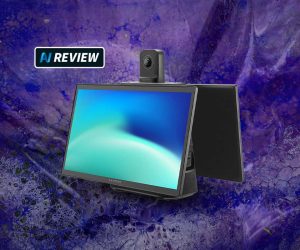


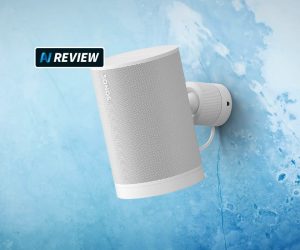

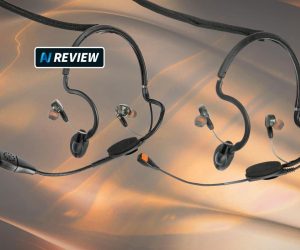
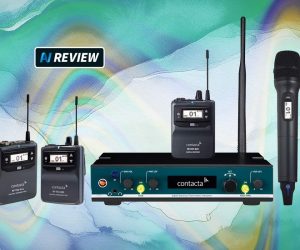



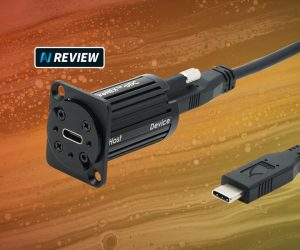


RESPONSES